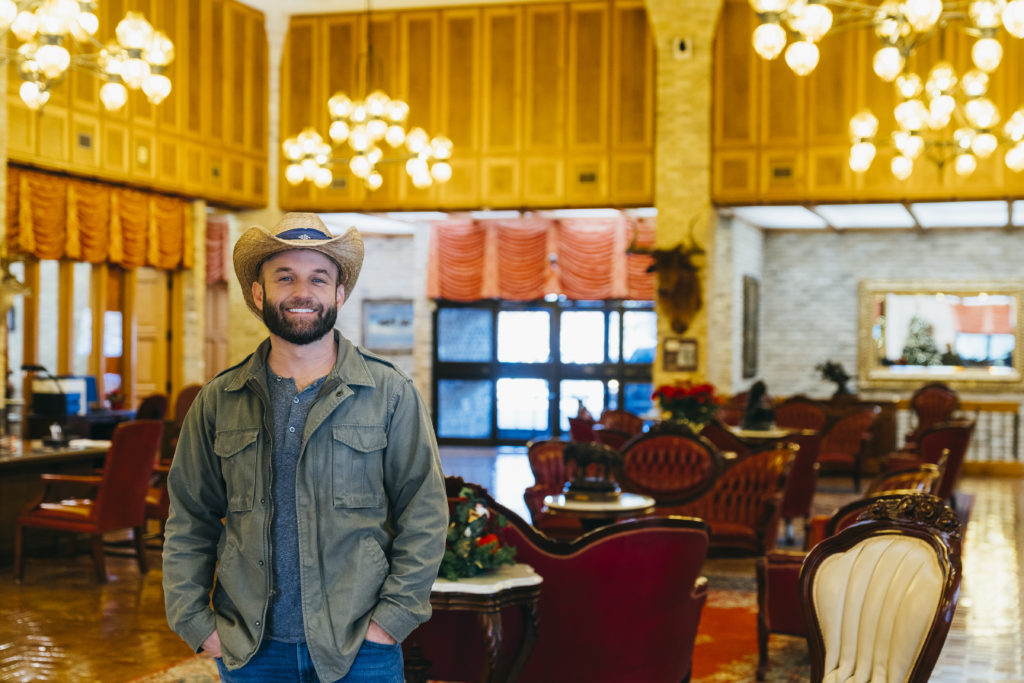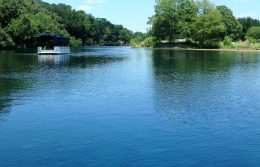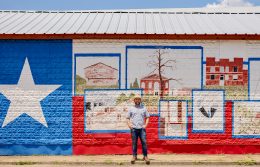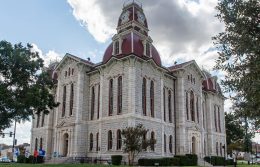City Spotlight: Uvalde
You’ve probably driven through this town on your way to the Great West, but few have probably stopped to explore it. Well, we stopped in Uvalde recently and found that you can do things here you can’t do anywhere else in the world.
Uvalde is a particularly interesting part of Texas. It’s at the point where three areas converge: the rugged West, the rolling Hill Country, and flat South Texas. At the crossroads of highways U.S. 90 and U.S. 83, you’ve also got these awesome cowboy and Mexican cultures meeting. (You have to try the mollejas gorditas at Live Oak Gorditas. It’s a deep-fried cow’s thalamus gland. Most people haven’t eaten thalamus gland, and they should.)
But Uvalde isn’t just a meeting point. It’s a destination point — Chalk Bluff Park is a popular spot on the beautiful, crystal-blue Nueces River. Uvalde is also the birthplace of two of Texas’ biggest political legends.
Love and Politics
John Nance Garner started out as a Uvalde County judge at the end of the 19th century. Although women were not yet allowed to vote, they were allowed to run — and one Mariette Rheiner, a Swiss rancher’s daughter, opposed him in the primary. He won the race — and her hand in marriage two years later.
Rheiner wasn’t successful in her county race, but she was to become the Second Lady of the United States; her husband soon rose to power to become Speaker of the House of Representatives and eventually served as vice president to President Franklin D. Roosevelt for two terms.

Photo by Todd White
To the White House
Although he famously didn’t think much of the vice presidency, he remained one of the most powerful people in America, with a persona as big as Texas. Nicknamed “Cactus Jack” for his failed attempt at making the prickly pear the official state flower of Texas, he swaggered around Washington with his hat and a cigar and formed a backroom politicians’ club that flouted the terms of Prohibition.
He ran for the presidency in 1940 but was beat out by Roosevelt, who succeeded to an unprecedented third term. After the loss, he declared, “I’m done with politics; I’m never going to go north of the Potomac River again.” And he never did.
Garner came back and lived the rest of his life out in Uvalde. But he stayed close with Roosevelt’s successor, Harry S. Truman, and retained his tremendous political influence. When President John F. Kennedy stepped off the plane in Dallas, the last call he ever made was to Garner, to wish him a happy birthday.

Photo by Todd White
The Briscoe-Garner Museum
Garner’s old home now houses the Briscoe-Garner Museum, one of four divisions of a University of Texas at Austin research center — the Dolph Briscoe Center for American History.
Briscoe was the 41st governor of Texas and served two terms in the 1970s. He considered Nance as his political mentor. A rancher himself, he worked for Texas farmers and ranchers as governor, made Farm-to-Market roads accessible, and was famous for his educational reforms.
Before he died, he was the largest individual landowner in Texas; he owned about 1,000 square miles — about the size of Rhode Island.

Photo by Todd White
The Ox Ranch
The veterans who run Ox Ranch take preserving history really seriously. A decade ago, they started buying and restoring old World War II army tanks and more modern-era army tanks. It’s like a living history museum. I guess if you have the right license, you can own an army tank.
So visitors can go out and ride old American, British, and German army tanks. For our recent episode, we went out there and drove a Sherman tank. It was really amazing. It’s the tank that won World War II for the allies and you’re inside a fully working one, driving it down these steep roads, through a river, into the woods. It’s a bucket list thing.
They let me throw a flame thrower, too. It was awesome.
Find more of Chet Garner’s day trips around Texas here.
© 2019 Texas Farm Bureau Insurance



